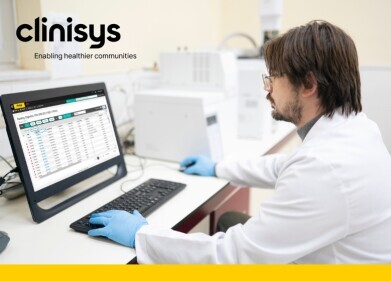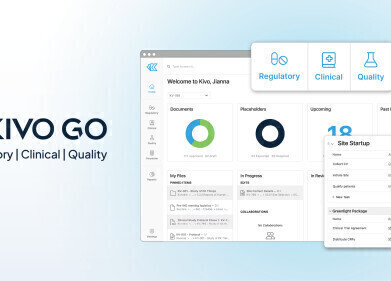LIMS
What is a Laboratory Information Management System (LIMS)?
Nov 07 2022
From tracking samples to logging results, laboratories generate a huge amount of data. Laboratory Information Management Systems (LIMS) are purpose-built to manage data and streamline workflows. The software-based solutions are used in laboratories around the world, from local clinical analysis facilities to world-class research and development institutions.
The “digital backbone” of labs
American-owned analytical instrument manufacturer Thermo Fisher Scientific describes LIMS technology as the “digital backbone” of laboratories. The ability to track data drastically improves efficiency and productivity, reduces operational costs, minimises the risks of human error and most importantly, drives innovation.
“A LIMS acts as an additional member of your team, automating workflows and tracking all the important sample information, data, workflows, and QA/QC results your lab generates each day,” reads the Thermo Fisher Scientific website.
The company stresses a good LIMS does more than just track data. It allows personnel to actively manage all laboratory processes, from sample intake and labelling to instrument maintenance, inventories and staff. Ultimately, the ability to streamline, digitalise and centralise information has an enormous impact on how laboratories operate.
The key goals of LIMS
LIMS solutions vary depending on the developer and the target industry. However, most platforms share the following goals:
Sample management and tracking
From blood, serum and tissue to soil and wastewater, samples are the bread and butter of most laboratories. A good LIMS platform should feature built-in sample management capabilities. This includes the ability to track samples as they move through the laboratory. Sample management is one of the most important features of LIMS as it helps to maintain the integrity of samples, improve data quality and meet chain of custody (CoC) requirements.
Instrument management and maintenance
Mass spectrometers, autoclaves and pipetting machines are just some of the instruments featured in modern laboratories. Monitoring the health of laboratory instruments and staying on top of scheduled maintenance and calibration is one of the most important responsibilities of LIMS. Ensuring instruments are in good working condition not only improves the quality of data but reduces the costs associated with unplanned maintenance.
Inventory management
From specialty chemicals and reagents to everyday cleaning products, LIMS make it easy to manage laboratory inventories. The systems actively track stock levels and use automatic reorder alerts to ensure products are replenished accordingly. Intelligent laboratory information management systems can also analyse usage and forecast demand, based on previous consumption. This ensures labs never run out of ingredients or face supply issues.
Operational management
LIMS software helps managers understand how many personnel the laboratory can accommodate and what type of workflow capacity to expect. This information helps determine timelines and turnaround times.
Complying with Standard Operating Procedures (SOPs)
SOPs help standardise laboratory practices and ensure data is of the highest possible quality. They safeguard personnel by identifying potential hazards and ensuring experiments meet the strict standards enforced in certain sectors. A central LIMS platform makes it easy for staff to access SOPs at their fingertips.
Improving workflow
Personnel can use LIMS software to build and improve workflows.
Automation
From liquid handling systems to rapid data analysis, LIMS helps laboratories embrace automation while retaining complete control over operations.
Collaboration and connectivity
Collaboration is critical in most laboratories. Storing data in a centralised platform makes it easy for personnel to connect, collaborate and innovate. This can be with staff in the same room or with personnel working on the other side of the globe.
Integration
LIMS software can be integrated with other tools such as Manufacturing Execution Systems (MES) and Enterprise Resource Planning (ERP) platforms, Chromatography Data Systems (CDS) and Electronic Lab Notebooks (ELN).
Archiving data
LIMS stores and tracks data in real time. This helps labs create and retain electronic records and comply with data archival requirements.
Cloud storage
Using LIMS to store data in the cloud allows personnel to access information from anywhere, at any time. Cloud infrastructure also offers an extra level of protection when it comes to security, system crashes and disaster recovery.
Compliance
Most laboratories must comply with strict industry regulations. LIMS platforms help personnel stay up to date with the latest regulations and comply with standards such as the ISO/IEC 17025:2017 General Requirements for the Competence of Testing and Calibration Laboratories.
Security
Cybersecurity is a serious threat to laboratories, particularly those handling sensitive data. LIMS plays a critical role in protecting data integrity and limiting system access.
Mobile functionality
The latest LIMS solutions feature mobile applications that allow personnel to access data on demand. This is particularly useful for personnel that carry out field work. For example, environmental analysts collecting and testing water samples onsite.
Data visualisation
Next-generation LIMS platforms make it easy to visualise data and create dashboards, reports, graphs, tables and more. The ability to transform raw data into meaningful information has revolutionised how labs interpret results.
Data analytics
LIMS allows labs to capture, share, analyse and audit data using a centralised platform.
Budget
From heavily funded institutions like the Large Hadron Collider (CERN) in Switzerland and the Synchrotron Radiation Laboratory in Shanghai, to independent research centres and academic facilities, LIMS software helps managers budget and allocate resources.
Finding the right LIMS fit
Taking the time to choose the right LIMS solution is an important step. Laboratories should consider their unique needs and choose a LIMS accordingly. For example, the ability to actively collect, share, analyse and archive data across multiple workflows will be a priority for research and development labs. The flexibility to adapt and evolve as new instruments, tools and techniques emerge is key.
Below, we take a closer look at some examples:
LIMS for bioanalytical laboratories
In bioanalytical laboratories, data visibility is front and centre. Labs will benefit from purpose-built LIMS software designed to support bioanalytical analysis and research. Investing in a LIMS platform built with bioanalytical workflows and protocols in mind is a guaranteed way to improve efficiency and data quality.
For example, Watson LIMS software from Thermo Fisher Scientific is designed exclusively for bioanalytical drug development laboratories. The platform is integrated with thoughtful features to streamline key processes like sample management, analytical runs and data flow. Compliance is a priority, with the software designed to meet the strict rules and regulations drug development laboratories must adhere to. All the top pharmaceutical giants in the industry rely on LIMS software to streamline workflows and comply with strict industry protocols.
LIMS for manufacturing laboratories
For manufacturing laboratories, a deep understanding of Standard Operating Procedures (SOPs) is an asset. LIMS platforms designed with SOPs in mind help labs generate high quality and reproducible data. Minimising the need for manual intervention is key and ideally, the LIMS should have the ability to automate actions and decisions.
LIMS for chemical and petrochemical laboratories
Chemical and petrochemical labs orbit around purpose-built LIMS software. The centralised systems help labs optimise processes, comply with industry regulations and continue to make innovations that improve our everyday lives.
LIMS for cannabis laboratories
The cannabis sector is another industry that depends on LIMS. The industry has boomed following the legalisation of medical cannabis in many US states and countries, as well as a growing appreciation for the medicinal benefits of the plant. A recent report published by The Insight Partners predicts the cannabis testing market will be worth almost US$3 billion by 2028. This represents a CAGR of more than 10%. Laboratory information management systems will play a critical role in supporting industry growth and establishing cannabis as a bona fide medicinal product.
In Canada, Green Scientific Labs has launched a proprietary Laboratory Information Management System designed to meet the needs of cannabis testing facilities. The custom-built software is packed with innovative features, including digital batch downloading, real-time data tracking and Artificial Intelligence (AI) capabilities.
“There is a huge tech component to GSL's testing process that sets us apart from other testing labs in the industry,” says Green Scientific Labs Chairman, Michael Richmond. “In order to take Green Scientific Labs to the next level, support our rapid expansion, maintain turnaround times, and future proof ourselves for eventual FDA style regulations, we needed to take everything we learned and create something special. That's exactly what we did.”
The future of Laboratory Information Management Systems
Demand for cutting-edge Laboratory Information Management Systems will endure as industries continue to grow, evolve and innovate. From medical cannabis research to COVID vaccinations, labs across all sectors rely on LIMS technology. By 2029, analysts predict the market size for LIMS will hit US$2 billion by 2029. Moving forward, LIMS giants like Thermo Fisher Scientific, PerkinElmer and Novatek International will continue to integrate technologies like machine learning and artificial intelligence into platforms. Tailoring software to meet the unique needs of industries is another trend that will continue to shape the future of LIMS.
Want to know more about what the future of LIMS looks like? Speed, accuracy, security and usability are prioritised in the latest version of LabVantage 8.8 LIMS. Discover more about features like rules-based AI, automatic re-calculation trigger technology and enhanced cybersecurity in ‘LabVantage LIMS Latest Release Delivers More Power, Reliability, and Value to Users’.
Digital Edition
ILM 49.5 July
July 2024
Chromatography Articles - Understanding PFAS: Analysis and Implications Mass Spectrometry & Spectroscopy Articles - MS detection of Alzheimer’s blood-based biomarkers LIMS - Essent...
View all digital editions
Events
Jul 28 2024 San Diego, CA USA
Jul 30 2024 Jakarta, Indonesia
Jul 31 2024 Chengdu, China
ACS National Meeting - Fall 2024
Aug 18 2024 Denver, CO, USA
Aug 25 2024 Copenhagen, Denmark





24_06.jpg)













